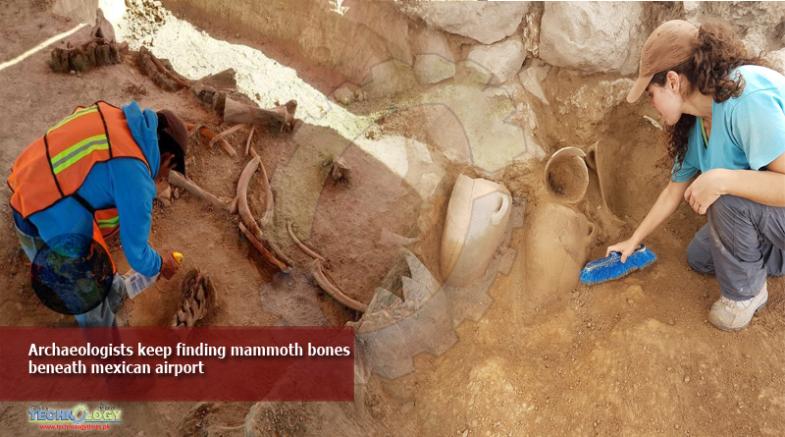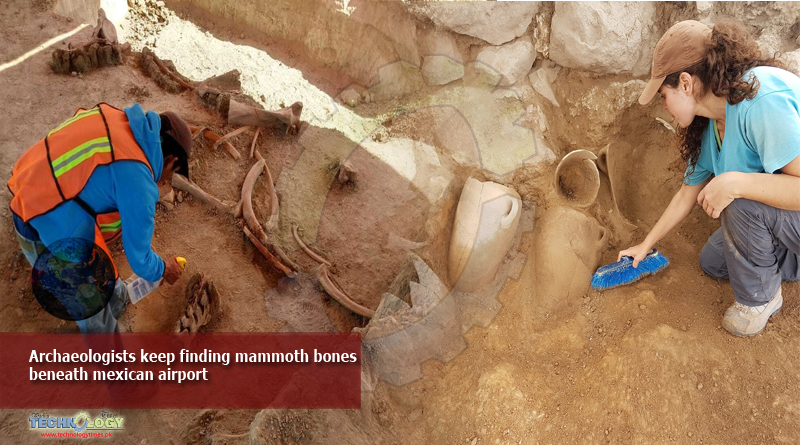Mammoth Bones : Excavation work for a proposed airport in central mexico has unearthed a seemingly endless cache of ancient mammoth skeletons,

Rather than celebrating this extraordinary discovery, pedro sánchez nava of the national institute of anthropology and history was somewhat lamenting it during his recent statement to the press, explaining that “there are too many, there are hundreds.”
Digging began last october in the town of santa lucia in mexico state, with plans to construct the san felipe international airport by 2022. Since work commenced, the remains of 60 mammoths have been discovered, and sánchez nava says that the extinct behemoths are likely to carry on turning up at a rate of about 10 a month.
The site is located on an ancient lake called xaltocan, which has long-since dried up. Researchers believe the mammoths probably died after becoming stuck in the mud around the shore of the lake, where they congregated to feed on grasses and reeds.
Measuring up to 4.6 meters (15 feet in height) and armed with enormous tusks, these columbian mammoths were once found throughout the continent, occupying a range that extended from canada to central america, before becoming extinct some 12,000 years ago. Unlike the eurasian woolly mammoth, this american species had very little fur – an adaptation to the relatively warm climate in which it lived.
Archaeologists working at the site believe that the mammoths died around 15,000 years ago, and say that the discovery reveals an unexpected ineptness on the part of these ancient beasts, which may have allowed neolithic humans to dine on mammoth meat with surprising regularity. According to sánchez nava, the astonishing frequency with which the animals seem to have succumbed to fatal accidents suggest that local people may have been able to enjoy mammoth as part of their “daily diet.”
None of the specimens at this particular site show signs of having been hunted or butchered, although separate mammoth pits just 10 kilometers (6 miles) away appear to have been dug by humans as a trap for the enormous creatures. Last year, archaeologists found bones belonging to at least 14 different mammoths in the pit, many of which showed signs of having been butchered.
While the latest findings likely died of natural causes, sánchez nava hypothesizes that humans may have taken advantage of the mammoths’ propensity to get stuck in the mud and drown, explaining that “it’s possible they may have chased them into the mud.”
Amazingly, it seems that no amount of mammoth bones can dampen the efficiency of mexico’s construction workers, with the airport still scheduled to go ahead as planned and on time.
This news was originally posted on iflscience.com
